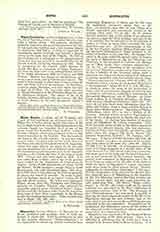

Hippo Diarrhytus (or HIPPO ZARRHYTUS), a titular see of Northern Africa, now called Bizerta, originally a Tyrian colony. The surname, Diarrhytus, probably came from the canal that traversed the city. It was captured, fortified, and a new harbor opened by Agathocles (310-307 s. c.); later it supported the mercenaries against Carthage, and became a Roman colony in the early days of the Empire. In 1535 of the Christian era it submitted to the protectorate of Spain, but soon cast this off; it was bombarded by the French in 1770, and by the Venetians in 1785. Since its occupation by the French (1882) Bizerta (in Arabic Ben-Zert, a corruption of Hippo Zarrhytus) has been the chief town of an administrative district. Of its 18,000 inhabitants, 2600 are French, and 6000 Italians. Bizerta has important fortifications, possesses a good trade, and its fisheries are famous. The canal is wide enough to allow men-of-war to enter the lake (the Sisara Lacus of the ancients). St. Restituta, a martyr under Diocletian, was born there; her feast is kept on May 17. St. Augustine often preached at Hippo Diarrhytus in the Florentia, Margarita, and St. Quadratus basilicas. The names of six of its bishops, between 255 and 646, are known; the first of them, Petrus, is, in some documents, styled a martyr.
S. PETRIDES

